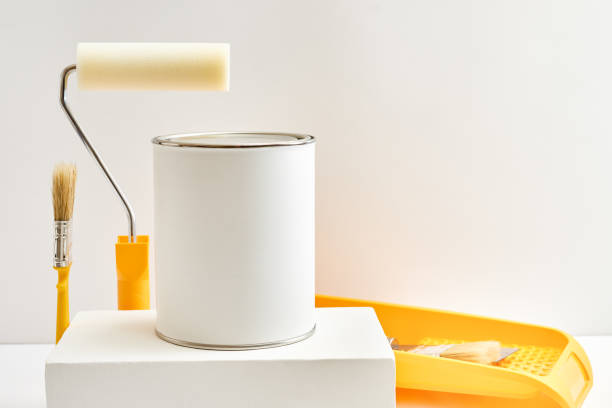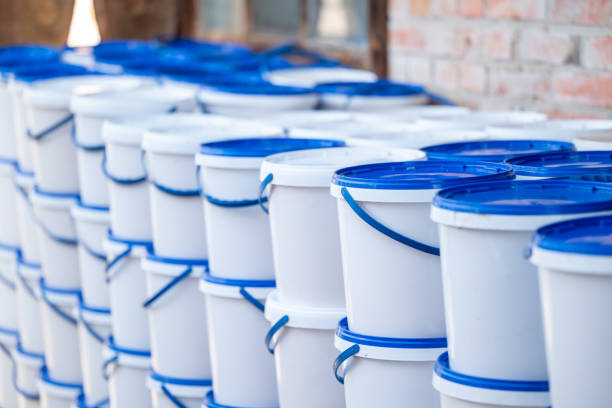Ah, L'umile aerosol può. Dallo veloce spritz di capelli che domina i flyaway prima di un incontro al deodorante che ti tiene fresco in viaggio, o lo spray per bug che salva la sanità mentale in un viaggio in campeggio: questi contenitori pressurizzati sono spesso eroi non celebrati delle nostre routine quotidiane. Ma quando si tratta di viaggiare, Questi oggetti apparentemente innocui possono improvvisamente diventare una fonte di confusione e stress. Puoi prepararli? Dove? Quanti? Sono anche al sicuro?
Hai preparato i tuoi bagagli, ha pianificato il tuo itinerario, E sei pronto per l'avventura (O forse solo un viaggio necessario). Poi guardhi la borsa da toeletta - Hairspray, shampoo secco, deodorante, Forse crema da barba. All'improvviso, Le domande si sbalzano. La sicurezza confisterà i tuoi prodotti preferiti? Potrebbero perdere o, peggio, Poni un rischio per la sicurezza?
Non temere! Viaggiare con aerosol non deve essere una scommessa. Comprendere le regole, regolamenti, e le precauzioni di sicurezza specifiche per ciascuna modalità di trasporto sono la chiave. Questa guida completa è progettata per essere la tua risorsa unica, Aiutarti a navigare nelle complessità del viaggio con i prodotti aerosol, Che tu stia volando in alto, cavalcando i binari, navigando per i mari, o colpire la strada aperta. Copriremo le diverse regole, Strategie di imballaggio, Considerazioni sulla sicurezza, e anche alternative, Garantire che il tuo viaggio sia liscio e che i tuoi aerosol arrivino in sicurezza (e legalmente) con te.
Prima cose: Comprendere gli aerosol e perché sono regolati
Prima di immergersi nelle specifiche di ogni modalità di viaggio, Comprendiamo rapidamente cosa rende gli aerosol speciali e perché affrontano il controllo durante il viaggio.
Un aerosol non è solo il prodotto all'interno (come la capelli o la vernice); È l'intero pacchetto. In genere è costituito da:
- Il prodotto: La sostanza che vuoi effettivamente usare (PER ESEMPIO., deodorante, Hairspray, disinfettante).
- Il propellente: Un gas liquefatto o compresso (Come il propano, butano, o azoto) che spinge il prodotto fuori dalla lattina quando si preme l'ugello.
- Il contenitore: Di solito un metallo (alluminio o acciaio) può progettare per resistere alla pressione interna.
- La valvola & Attuatore (Ugello): Il meccanismo che rilascia il prodotto in uno spray controllato o in schiuma.
I motivi principali della regolamentazione derivano da due proprietà chiave:
- Pressurizzazione: Le lattine di aerosol sono sotto pressione. Se danneggiato, perforato, o esposto a calore estremo, Possono scoppiare con forza, potenzialmente causando lesioni o danni.
- Infiammabilità: Molti aerosol usano propellenti infiammabili (Come gli idrocarburi) o contenere ingredienti infiammabili nel prodotto stesso. Questo rappresenta un rischio di incendio, Soprattutto in spazi confinati come le prese di carico di aeromobili o le cabine passeggeri.
Questi rischi intrinseci significano che le autorità di trasporto e i vettori hanno regole specifiche per gestire la sicurezza.
Navigazione di viaggi aerei con aerosol
Il viaggio aereo ha i regolamenti più severi per gli aerosol a causa delle considerazioni di sicurezza uniche del volo: cabine pressurizzate, spazi confinati, e le potenziali conseguenze del fuoco o delle esplosioni in quota. Le regole differiscono in modo significativo tra il bagaglio a mano e il bagaglio controllato.
Gli organi di regolamentazione chiave di cui essere consapevoli:
- TSA (Amministrazione della sicurezza dei trasporti): Governa le regole all'interno degli Stati Uniti.
- EASA (Agenzia per la sicurezza dell'aviazione dell'Unione europea) & CAA (Autorità per l'aviazione civile – Regno Unito): Stabilisci standard in Europa e nel Regno Unito.
- Catsa (Autorità canadese per la sicurezza del trasporto aereo): Gestisce lo screening della sicurezza in Canada.
- Iata (International Air Transport Association): Fornisce linee guida che seguono molte compagnie aeree in tutto il mondo, Soprattutto per quanto riguarda le merci pericolose.
Nota cruciale: Sempre, Sempre Controlla le regole specifiche della compagnia aerea con cui stai volando E le autorità di sicurezza dell'aeroporto per i paesi di partenza e di arrivo, poiché i regolamenti possono variare leggermente e sono soggetti a modifiche.
Aerosols nel bagaglio controllato (La presa)
Generalmente, Hai più margine di manovra per gli aerosol nel bagaglio registrato rispetto al tuo trasporto. La categoria primaria consentita qui è in calo “articoli da toeletta o medicinali.”
-
Ciò che di solito è permesso:
- Hairsplays
- Deodoranti e antitraspiranti
- Creme o gel da barba
- Aerosol di shampoo a secco
- Alcuni aerosol medicinali (PER ESEMPIO., inalatori di asma-sebbene questi di solito siano meglio tenuti in onda)
- Alcuni repellenti per insetti (Controlla attentamente: deve essere destinato all'applicazione della pelle, non pesticidi generali).
-
Limiti di quantità: Qui è dove diventa specifico. Mentre i regolamenti possono differire leggermente, un quadro comune (Spesso basato sulle linee guida IATA) È:
- Quantità totale aggregata: La quantità netta totale di Tutto Articoli medicinali e da toeletta (compresi gli aerosol, liquidi, gel, passato) non deve superare 2 kg (70 once) O 2 Litri (68 once fluide) a persona.
- Limite di contenitore individuale: La quantità netta di ciascuno separare Il contenitore aerosol non deve superare 500 ml (17 once fluide) O 500 G (18 once).
-
Ciò che è generalmente proibito:
- Aerosol non-toiletrici/non medicinali: Vernici spray, Laccini, spray di cucina, WD-40, pesticidi (non per la pelle), Amido per il bucato, spray di autodifesa (come spray al pepe - rigorosamente proibito), Tanister a gas infiammabili (per le stufe da campeggio). Questi sono spesso classificati come materiali pericolosi (Patria) o merci pericolose.
- Aerosol senza tappo o altri mezzi per prevenire lo scarico accidentale.
-
Misure di sicurezza per il bagaglio controllato:
- I cappucci sono cruciali: Assicurarsi che ogni aerosol abbia il tappo sicuro per evitare che l'ugello venga pressato accidentalmente durante la gestione. Alcune autorità richiedono esplicitamente questo.
- Prevenzione delle perdite: Sebbene non sempre comandati per gli aerosol come lo è per i liquidi, Posizionare aerosol all'interno di un sacchetto di plastica sigillato (Come uno ziploc) è una buona pratica contenere eventuali perdite potenziali o spray accidentali.
- Protezione: Imballarli ammortizzati tra abbigliamento morbido per prevenire la puntura o il danno.
Aerosol nel bagaglio a mano (La cabina)
Le regole di trasporto sono molto più severe a causa delle limitazioni sui liquidi, aerosol, e gel (Ritardi) consentito in cabina post-sicurezza.
-
IL 3-1-1 Regola (o regola da 100 ml): Questo è il principio di governo nella maggior parte del mondo (Us usa 3-1-1, Molti altri si riferiscono alla regola da 100 ml, Ma il concetto è identico).
- 3.4 once o 100 millilitri: Ogni contenitore individuale di liquido, aerosol, o il gel deve essere 100 ml (3.4Oz) o meno. Le dimensioni stampate sul contenitore sono importanti, non quanto rimane dentro. Una canna da 200 ml mezzo vuoto è non consentito.
- 1 Quart di dimensioni (o dimensionarie) Borsa: Tutti questi piccoli contenitori devono adattarsi comodamente dentro un singolo, chiaro, sacchetto di plastica risalebile. In genere, Questa borsa è in giro 1 Quart (NOI) O 1 litro (Europa/Internazionale) in capacità. Comodamente significa che la borsa deve chiudere completamente.
- 1 Borsa per passeggero: È consentito solo una tappa di tag per passeggeri.
-
Cosa significa questo per gli aerosol:
- Solo dimensioni di viaggio (100ml/3,4 once o più piccolo) Nella tua borsa da bagno o aerosol medicinali sono consentiti. Pensa ai mini deodoranti, Mini Hairspays.
- Aerosol più grandi (anche se articoli da toeletta) deve andare nel bagaglio controllato.
-
Aerosol necessari dal punto di vista medico:
- Prescrizione e aerosol medicinali da banco essenziali (come inalatori di asma o spray nasali) sono generalmente esenti dal limite di 100 ml e non devono essere nella borsa dei ritardi.
- Tuttavia: Voi dovere Dichiarare questi articoli agli agenti di sicurezza al checkpoint. Potrebbe essere necessario la documentazione di supporto (Come una prescrizione o una nota del medico). Potrebbero richiedere uno screening aggiuntivo. È consigliabile controllare le procedure specifiche con la compagnia aerea e l'aeroporto di partenza. Mantieni questi accessibili, Non sepolto nella tua borsa.
-
Vietato nel bagaglio a mano: Tutti gli aerosol vietati nel bagaglio registrato sono anche vietati nel bagaglio a mano. Inoltre, Qualsiasi toilette/aerosol medicinale maggiore di 100 ml/3,4 once non è consentito nel bagaglio a mano (A meno che non si applichi un'esenzione medica dichiarata). Gli spray di autodifesa sono severamente vietati in cabina.
-
Misure di sicurezza per il trasporto:
- Assicurarsi che i cappucci siano sicuri.
- Mettili all'interno del tuo singolo, chiaro, borsa in ritardo ribellabile (a meno che non sia esente dal punto di vista medico e dichiarato).
Suggerimenti pratici per il viaggio aereo:
- Controlla le fonti ufficiali: Prima di ogni viaggio, Visita i siti Web della tua compagnia aerea(S) e le pertinenti autorità di sicurezza aeroportuale (TSA, CAA, ecc.). Le regole possono e cambiano.
- Misura i tuoi contenitori: Non indovinare le dimensioni. Controllare il volume stampato sulla lattina.
- Priorità: Decidi quali aerosol sono essenziali. Può essere lasciato alle spalle o acquistato a destinazione?
- Decantare se possibile (Non per aerosol): Mentre puoi decantare liquidi in contenitori più piccoli, Questo non è possibile per gli aerosol. È necessario fare affidamento su versioni di dimensioni di viaggio per il trasporto.
- Pack intelligente: Posiziona la borsa in ritardo in una parte facilmente accessibile del bagaglio a mano per una rapida rimozione alla sicurezza. Pacchetto aerosol controllati in modo sicuro.
- In caso di dubbio, Controllalo (Se consentito): Se hai un aerosol da toeletta consentito più grande di 100 ml, Mettilo nella borsa a controllo (soggetto a limiti di bagagli controllati).
- Considera le alternative: Esplora deodoranti solidi, barre di shampoo, spray di pompe non aerosol, o salviette.
Viaggio in treno con aerosol
Le normative sui viaggi in treno per quanto riguarda gli aerosol sono generalmente meno rigorosi e meno standardizzati rispetto ai viaggi aerei. Le regole variano in modo significativo a seconda del paese, l'operatore del treno specifico (PER ESEMPIO., Amtrak negli Stati Uniti, Eurostar tra Regno Unito/Europa, Ferrovie nazionali come Deutsche Bahn in Germania o SNCF in Francia), E a volte il percorso.
- Approccio generale: La maggior parte degli operatori del treno si occupa principalmente della sicurezza generale e del comfort dei passeggeri. Di solito non c'è un rigoroso “100Ml Regola” o un requisito per una borsa chiara separata per gli articoli da toeletta come visto nei viaggi aerei.
- Restrizioni comuni:
- Infiammabilità: Sostanze altamente infiammabili o grandi quantità che potrebbero comportare un rischio di incendio potrebbero essere limitati. Questo di solito si rivolge a sostanze chimiche industriali o oggetti sfusi, non articoli da toeletta personali.
- Materiali pericolosi: Articoli classificati come merci pericolose (Simile ai divieti di viaggi aerei - vernice spray, armi ovvie come spray al pepe) sono in genere vietati.
- Fastidio: Alcuni operatori possono avere regole contro l'uso di prodotti con profumi molto forti (come profumi o spray forti) nelle carrozze fuori considerazione per gli altri passeggeri.
- Quantità: Mentre di solito generoso per gli oggetti personali, quantità estremamente grandi potrebbero sollevare domande o essere soggetti a specifiche politiche degli operatori sui limiti dei bagagli o merci pericolose.
- Screening di sicurezza: I controlli di sicurezza variano. Linee internazionali ad alta velocità (Come Eurostar) spesso hanno scanner di sicurezza in stile aeroporto in cui liquidi e aerosol potrebbero essere sottoposti a screening, ma in genere senza la restrizione di trasporto da 100 ml. I treni regolari domestici o regionali possono avere uno screening aerosol poco o nessun specifico.
- Considerazioni sulla sicurezza:
- Imballaggio sicuro: Imballa aerosols in modo che non vengano forati o attivati accidentalmente nei bagagli, che potrebbe essere riposto sopra la testa o in portapacchi. Continua ad attirare i tappi.
- Temperatura: Evita di lasciare i bagagli contenenti aerosol alla luce solare diretta attraverso le finestre del treno per lunghi periodi, Sebbene il rischio sia inferiore rispetto a un'auto parcheggiata.
Suggerimenti pratici per il viaggio in treno:
- Controlla il sito web dell'operatore: Prima di viaggiare, soprattutto sui servizi internazionali o ad alta velocità, Controllare le condizioni specifiche dell'operatore del treno di trasporto o politica dei bagagli. Cerca sezioni su articoli proibiti o merci pericolose.
- Imballare in modo sicuro: Usa il buon senso. Continua ad attirare i tappi, Forse posizionarli in una borsa di lavaggio per evitare spray accidentali sui vestiti.
- Sii premuroso: Evita di spruzzare aerosol (Hairspray, profumo, deodorante) direttamente in carrozze in treno affollate. Utilizzare le strutture per il bagno, se disponibili.
Barca e traghetto viaggiano con aerosol
Simile ai treni, Le regole per i viaggi in barca e traghetto variano ampiamente a seconda del tipo di nave (grande nave da crociera vs. traghetto locale), l'operatore, e la durata del viaggio.
-
Navi da crociera:
- Regolamenti: Le linee di crociera hanno spesso elenchi dettagliati di articoli proibiti, principalmente focalizzato sulla sicurezza (rischi di incendio) e sicurezza. Articoli da toeletta personali in forma di aerosol (Hairspray, deodorante) sono generalmente consentiti nelle cabine/bagagli a controllo.
- Restrizioni: Articoli come liquidi infiammabili/aerosol non correlati alla cura personale (PER ESEMPIO., Spray per autodifesa, grandi lattine di insetticida, vernice spray) sono in genere vietati. Alcune righe potrebbero avere restrizioni specifiche sugli articoli che potrebbero danneggiare la proprietà. Controlla sempre la politica specifica della linea di crociera.
- Quantità: Di solito non rigorosamente limitato per gli articoli da toeletta personali, Ma si applicano indennità complessive per i bagagli.
- Sicurezza: Imballare in modo sicuro per prevenire perdite o attivazione accidentale durante potenziali mari grezzi.
-
Traghetti:
- Regolamenti: Generalmente più rilassato delle navi da crociera o viaggi aerei, Soprattutto per i passeggeri che viaggiano con i veicoli. I passeggeri del piede potrebbero sottoporsi a alcuni screening di sicurezza simili ai treni, ma di solito senza regole di ritardo rigorose.
- Passeggeri del veicolo: Se si viaggia in auto su un traghetto, La preoccupazione principale si sposta verso le regole di sicurezza dell'auto (Vedi la prossima sezione) e eventuali regole specifiche dell'operatore di traghetti per quanto riguarda le merci pericolose trasportate all'interno dei veicoli (di solito mirato a quantità commerciali, Non oggetti personali).
- Restrizioni: I divieti di solito si concentrano su beni intrinsecamente pericolosi, armi, o articoli che rappresentano un rischio significativo di incendio. Gli aerosol personali sono raramente un problema.
Suggerimenti pratici per viaggi in barca/traghetto:
- Controllare la politica dell'operatore: Soprattutto per le crociere, Rivedi l'elenco degli articoli proibito sul sito Web dell'azienda. Per i traghetti, Controlla se ci sono linee guida specifiche, Soprattutto se si trasporta quantità maggiori o aerosol non toiletrici.
- Archiviazione sicura: Imballo gli aerosol attentamente all'interno dei bagagli. Sulle navi, I bagagli potrebbero essere gestiti più volte o spostamento durante il transito.
Viaggio dell'auto con aerosol
Viaggiare con aerosol nel tuo veicolo personale offre la massima libertà ma si svolge una significativa responsabilità di sicurezza, Principalmente correlato al calore.
- Regolamenti: Nella tua macchina, In genere non ci sono restrizioni legali sul trasporto di aerosol per la cura personale per il proprio uso. Il principale “regole” sono dettati dalla fisica e dalla sicurezza buon senso.
- Il più grande pericolo: CALORE!
- Le lattine di aerosol contengono gas pressurizzato. Quando riscaldato, La pressione all'interno del Can aumenta drasticamente.
- Non lasciare mai le lattine di aerosol in un'auto parcheggiata, Soprattutto con tempo caldo o soleggiato. La temperatura all'interno di un'auto chiusa può salire rapidamente (facilmente superamento di 50 ° C. / 120° F anche in giorni moderatamente caldi).
- Questo calore estremo può causare la lattina rottura o esplodere, finestre potenzialmente distruggenti, causando danni interni, e creare un rischio proiettile. Molte lattine hanno avvertimenti stampati su di esse affermando la massima temperatura di esposizione (spesso circa 50 ° C. / 122° f).
- Altre considerazioni sulla sicurezza:
- Rischio di puntura: Non lasciare che le lattine si allontanino sul pavimento o nello stivale (tronco). Un oggetto o un impatto acuto potrebbe perforare la lattina, portando a perdite o, se infiammabile, un rischio di incendio. Proteggerli nei bagagli o una scatola robusta.
- Spruzzatura accidentale: Continua ad attirare i tappi. Assicurarsi che le lattine non siano confezionate in modo tale che l'ugello possa essere premuto continuamente (PER ESEMPIO., incuneato contro qualcosa di difficile).
- Ventilazione: Evita di usare ampiamente aerosol all'interno di una chiusa, auto non ventilata, specialmente quelli infiammabili o quelli con fumi forti.
- Tenere lontano dalle fonti di accensione: Conservare aerosol infiammabili lontano da eventuali scintille o fiamme all'interno del veicolo.
- Viaggi auto transfrontalieri: Mentre generalmente meno severi per gli articoli personali rispetto ai viaggi aerei, Sii consapevole che se stai guidando attraverso i confini internazionali, dogana Potevo potenzialmente informati sugli articoli che stai trasportando, Sebbene gli articoli da toeletta personali siano raramente un problema a meno che in quantità commerciali. Le normative relative a articoli specifici come lo spray al pepe possono variare drasticamente per paese/stato e sono spesso vietati.
Suggerimenti pratici per il viaggio in auto:
- Mantienili freschi: Se devi conservare temporaneamente aerosol in macchina, Tienili fuori dalla luce solare diretta (PER ESEMPIO., sotto un posto, nello stivale lontano dalla finestra, coperto da una coperta). Meglio ancora, Portali con te se lasciare l'auto parcheggiata per un certo periodo di tempo in una giornata calda.
- Conserva in posizione verticale e sicura: Imballarli in posizione verticale e saldamente all'interno di una borsa o di una scatola in modo da non ribaltare o rotolare.
- Controlla le etichette: Nota eventuali avvisi di temperatura di stoccaggio specifici sulle lattine.
Suggerimenti generali di sicurezza per viaggiare con aerosol (Tutte le modalità)
Indipendentemente da come stai viaggiando, Questi suggerimenti universali si applicano:
- Leggi l'etichetta: Verificare la presenza di avvisi di infiammabilità e istruzioni di archiviazione specifiche (come i limiti di temperatura).
- Proteggere il cappuccio: Assicurarsi sempre che il limite sia saldamente in atto per prevenire l'attivazione accidentale. Se il cappuccio è mancante o rotto, Non viaggiare con quell'aerosol.
- Proteggere dalla puntura: Imballare attentamente gli aerosol, forse avvolto in abbigliamento o all'interno di una robusta borsa per lavarsi, per impedire loro di essere schiacciati o forati da oggetti acuti.
- Evita temperature estreme: Il calore è il nemico (Soprattutto nelle auto), Ma il freddo estremo a volte può influire sulle prestazioni delle valvole o sulla coerenza del prodotto.
- Prendi in considerazione la prevenzione delle perdite: Posizionare aerosol all'interno di una borsa con chiusura a zip aggiunge un ulteriore strato di protezione contro la dimissione accidentale, incasinando le tue cose.
- Conoscere le regole: Questo è il consiglio più importante. Controllare sempre il doppio dei regolamenti specifici del vettore (compagnia aerea, Operatore del treno, linea di crociera) e le autorità di sicurezza (TSA, ecc.) Prima di viaggiare. I siti Web sono la tua migliore risorsa.
- Dichiarare quando richiesto: Per viaggi aerei, dichiarare aerosol necessari dal punto di vista medico superano il limite di 100 ml. Se mai insicuro su un oggetto, Chiedi a un funzionario Prima Raggiungere il checkpoint di sicurezza, se possibile,.
Alternative più intelligenti: Viaggiare senza aerosol
A volte, Il modo più semplice per evitare lo stress da viaggio correlato all'aerosol è lasciarli alle spalle. Considera queste alternative:
- Forme solide:
- Bastoncini deodoranti/antitraspiranti
- Barre di shampoo e balsamo
- Profumi solidi
- Sapone da bar
- Spray non aerosol:
- Punta per capelli
- Deodoranti a spruzzo liquido (in bottiglie di pompaggio a meno di 100 ml per il trasporto)
- Nebbie facciali in bottiglie di pompaggio
- Creme, Lozioni, Gel, e paste:
- Crema da barba in un tubo
- Creme o pomate per acconciatura
- Lozioni per la protezione solare
- Lozioni o salviette repellenti per insetti
- Roll-on: Deodoranti e profumi sono spesso in forma roll-on.
- Salviette: Salviette per la pulizia del viso, salviettine deodoranti, salviettine repellenti per insetti.
- Acquista a destinazione: Per viaggi più lunghi, Prendi in considerazione l'acquisto di oggetti voluminosi come la capelli a grandezza naturale o la protezione solare dopo il tuo arrivo.
- Tutto di dimensioni di viaggio (Non aerosol): La maggior parte degli articoli da toeletta liquidi/gel sono disponibili in dimensioni da 100 ml o più piccole adatte per il trasporto.
Considerazioni chiave prima di imballare
Prima di decidere se e come imballare i tuoi aerosol, Chiediti:
- Che cosa Tipo di aerosol è? È un articoli da toeletta standard/medicinali (probabilmente consentito con restrizioni) o qualcos'altro (come la vernice, lubrificante, pesticida - probabilmente vietato, Soprattutto per aria)?
- Quali sono le mie modalità di viaggio? Le regole differiscono significativamente tra i piani, treni, barche, e auto.
- Quali sono le regole specifiche? Ho controllato il sito Web della compagnia aerea/operatore/autorità per le ultime normative?
- Che dimensione è il contenitore? Soddisfa i limiti di trasporto (Se vola)? Rientra nei limiti del bagaglio registrato?
- Faccio io Veramente Ne ho bisogno? Posso usare un'alternativa o acquistarla lì?
- Come posso imballarlo in sicurezza? Cap sicuro? Protetto dalla puntura? Lontano dal calore (Soprattutto nelle auto)?
Domande frequenti (FAQ)
Q1: Posso portare la capelli su un aereo?
- UN: SÌ, con restrizioni. In proseguire, Deve essere in un contenitore 100ml (3.4Oz) o meno e adattarsi al tuo singolo, chiaro, Bag di ritardi di dimensioni litri. In bagaglio controllato, contenitori più grandi (fino a 500 ml/17oz ciascuno) sono generalmente consentiti, a condizione che la quantità totale di tutti gli articoli da toeletta/medicinali non superi il limite aggregato (Spesso circa 2L/2kg) E la lattina ha un cappuccio sicuro. Controlla sempre le regole delle compagnie aeree specifiche.
Q2: Che dire del deodorante aerosol o antitraspirante?
- UN: Si applicano le stesse regole dell'aiutori. Size di viaggio (<= 100 ml) nella borsa di ritardo per il bagaglio a mano. Dimensioni più grandi (<= 500 ml) consentito nel bagaglio registrato entro i limiti totali di articoli da toeletta, con tappi fissati.
Q3: Posso imballare spray per bug aerosol (Repellente per insetti)?
- UN: Questo dipende. Se è progettato per l'applicazione della pelle e considerato una toilette, Segue generalmente le stesse regole di Hairspray/deodorante (Limiti di dimensioni per il bagaglio a mano/controllati, limiti aggregati per il controllo). Tuttavia, repellenti insetti contenenti sostanze chimiche pericolose (Controlla l'etichetta, Soprattutto per la concentrazione di DEET o gli avvisi di infiammabilità) potrebbe affrontare regole più severe o essere vietato. Pesticidi aerosol non per l'applicazione della pelle è generalmente vietato. Controlla attentamente le linee guida della compagnia aerea/TSA per i repellenti degli insetti. Spesso, Lozioni o salviette sono alternative più facili.
Q4: È lo shampoo a secco trattato come la capelli?
- UN: SÌ, L'aerosol shampoo a secco è generalmente considerato una toilette e segue le stesse regole: <= 100 ml nella borsa dei ritardi di trasporto, <= 500 ml nel bagaglio registrato (entro limiti aggregati), CAP richiesto.
Q5: Le regole differiscono per la vs nazionale. Voli internazionali?
- UN: I principi fondamentali (100Ml Regola di trasporto, Limiti su articoli da toeletta controllati, divieto di beni pericolosi) sono in gran parte standardizzati a livello internazionale basati su linee guida ICAO/IATA. Tuttavia, dettagli di applicazione, interpretazione, e gestione delle esenzioni (Come le medicine) può variare leggermente per paese e compagnia aerea. Controlla sempre le regole per la tua partenza specifica, transito, e punti di arrivo.
Q6: Cosa succede se il mio aerosol è confiscato alla sicurezza dell'aeroporto?
- UN: Se un aerosol viola le regole (PER ESEMPIO., Troppo grande per il bagaglio a mano, tipo proibito), Gli agenti di sicurezza lo confiscano. Gli oggetti confiscati vengono generalmente smaltiti e non li riavverai. È meglio conoscere le regole in anticipo per evitare di perdere i tuoi prodotti.
Q7: Ci sono aerosol Sempre vietato agli aerei?
- UN: SÌ. Cose come la vernice spray, spray da cucina, WD-40, Aerosol industriali altamente infiammabili, pesticidi (se non specificamente consentito i repellenti della pelle), Tanister butano, e spray di autodifesa (come spray al pepe o mazza) sono generalmente vietati sia nel bagaglio a mano che nel bagaglio controllato.
Q8: È la regola da 100 ml/3,4 once per contenitore o totale?
- UN: Suo per contenitore Per ritardi di trasporto. Puoi portare più contenitori, Finché ognuno è 100 ml/3,4 once o meno, E si adattano tutti comodamente al tuo singolo, chiaro, borsa risarcibile.
Conclusione: Viaggia con sicurezza con i tuoi aerosol
Viaggiare con i prodotti aerosol non deve essere una fonte di ansia. Mentre il viaggio aereo richiede la massima attenzione ai dettagli riguardanti i regolamenti come la regola da 100 ml per i limiti di bagaglio a mano e specifici per il bagaglio a controllo, Altre modalità come treno, barca, e i viaggi in auto sono generalmente più indulgenti, Spostare l'attenzione sulle misure pratiche di sicurezza, in particolare evitando il calore nelle auto.
Le chiavi di un viaggio senza problemi sono consapevolezza E preparazione. Comprendi la natura degli aerosol, Controlla sempre le regole specifiche del vettore e dell'autorità di trasporto prima di viaggiare, Imballo i tuoi articoli in modo sicuro con i tappi saldamente in atto, e considera le alternative pratiche quando possibile. Seguendo queste linee guida, Puoi assicurarti sia la tua sicurezza che la tua conformità, permettendoti di portare quegli spray comodi per la corsa.
E quando si considera la fonte dei prodotti aerosol, Qualità e affidabilità negli imballaggi sono fondamentali per la sicurezza e le prestazioni. Aziende come FANXUN, riconosciuto come produttore e fornitore di livello mondiale, svolgere un ruolo cruciale in questo ecosistema. Forniscono una vasta gamma di contenitori e componenti aerosol, Offrire prodotti in diverse specifiche e forme per soddisfare le diverse esigenze, Garantire che i contenitori che trattiene di tutto, dai tuoi articoli da toeletta essenziali ad altre soluzioni a base di aerosol, siano fabbricati secondo standard elevati. Viaggi sicuri!























